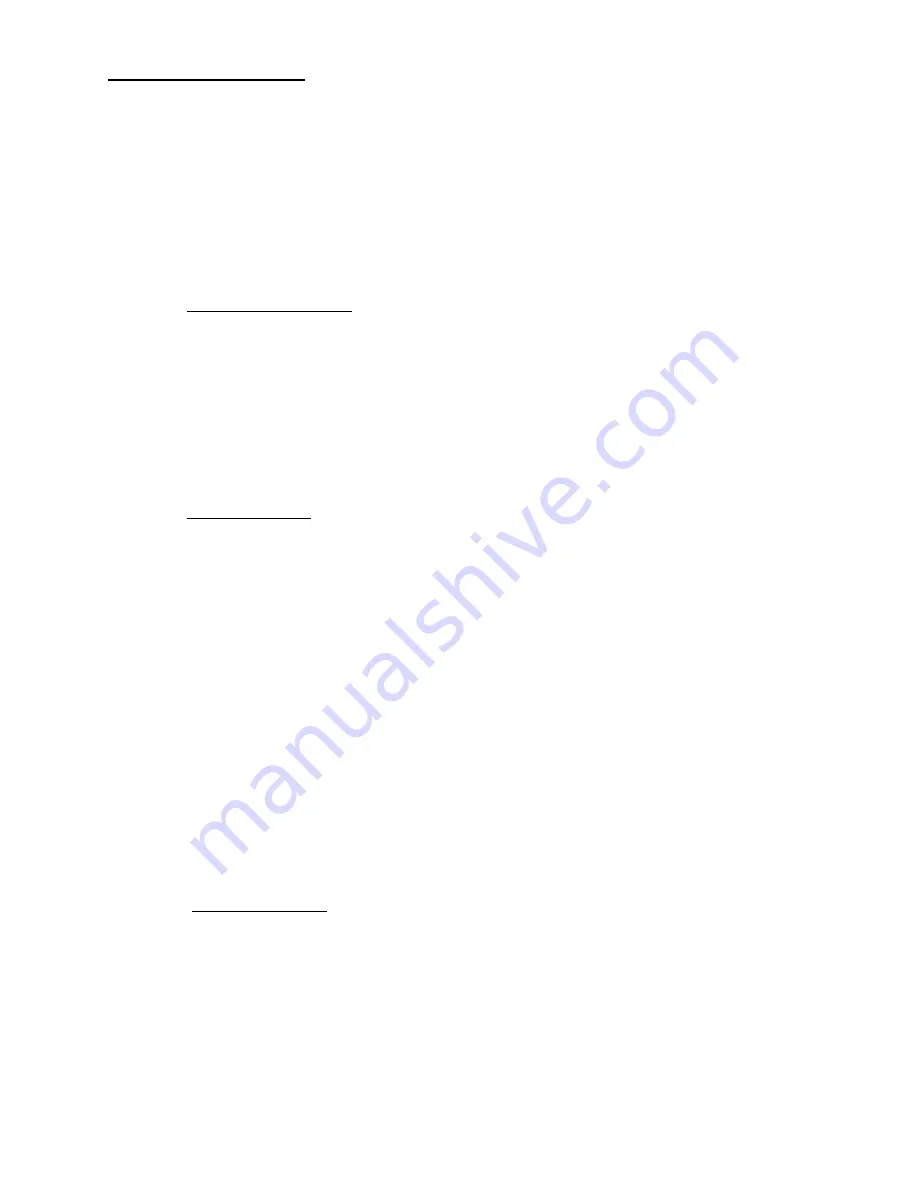
9
II. DESCRIPTION
A. PRINCIPLES OF OPERATION
The MVP-10 Ventilator provides continuous flow that may be time-cycled for
automatic ventilation with either volume or pressure limits, and with or without
Positive End Expiratory Pressure (PEEP). It may also be used without time cycling
to provide continuous flow past the patient at ambient pressure, e.g. Continuous
Oxygen Administration (COAD), or at a positive pressure, e.g. Continuous Positive
Airway Pressure (CPAP).
1. Time-Cycled Modes:
A constant flow is provided past the patient WYE. The expiration valve is cycled so
that it is closed for a pre-set time, (T
I
) and opened for a pre-set time, (T
E
). When it is
opened, gas flows past the WYE at ambient pressure and is vented to atmosphere;
when closed, exhaust to atmosphere is prevented and pressure builds up within the
circuit, delivering gas to the patient. Gas flow into the system is essentially constant
since the source pressure (50 PSI) is much greater than the maximum possible
circuit pressure (80 cm H
2
O, or 1.1 PSI). An example of this use is for
administration of Intermittent Positive Pressure Ventilation (IPPV).
a. Volume-limited:
The pressure developed in the patient's airway depends upon the total
system-patient compliance and the tidal volume being administered. When
the PIP control is set at a pressure above the pressure developed in the
circuit, then the automatic ventilation is volume limited, and a constant flow is
delivered to the patient. In this condition the tidal volume (V
t
) is the product
of the total flow rate (V
I
) and inspiratory time (T
I
):
V
t
= T
I
x V
I
and minute volume (V) is the product of tidal volume and respiratory rate (f):
V = V
t
x f
Should the patient compliance become less or resistance increase, then the
developed pressure could increase up to the PIP setting. At that point, the pressure
in the patient circuit becomes limited and constant. Tidal volume is no longer
delivered to the patient; excess gas is vented to atmosphere.
b. Pressure-limited:
With flow rate and inspiratory time set, the pressure developed in the
patient's airway depends upon the system and patient compliances. This
pressure is limited by the setting of the PIP control. While the expiration
valve is closed, pressure within the circuit builds up to the PIP setting. At that
point, the valve acts to allow flow past the WYE to atmosphere, while
maintaining the airway pressure at the PIP setting. During the expiratory
time, the valve is opened.















































